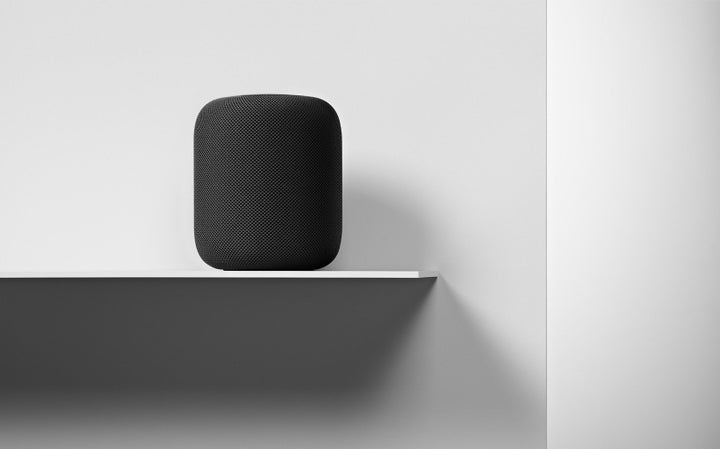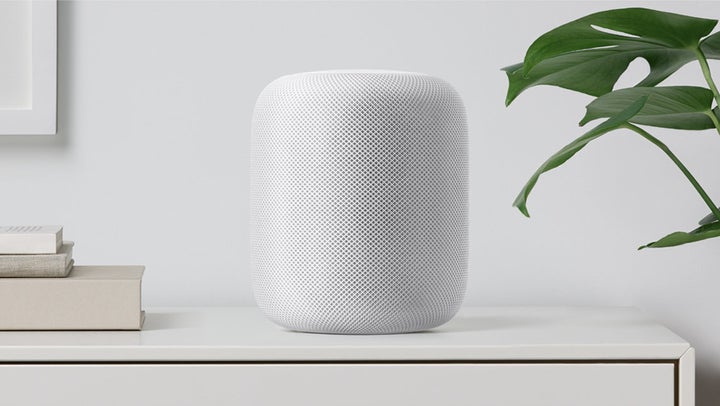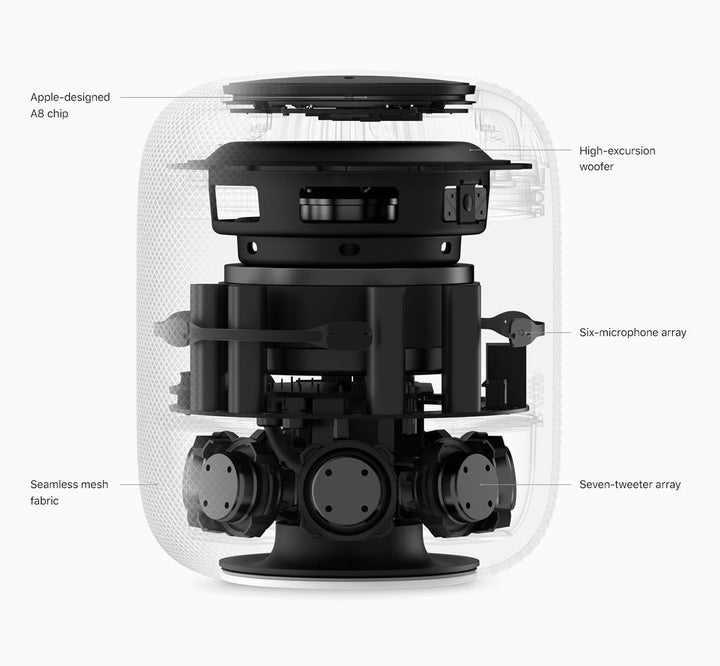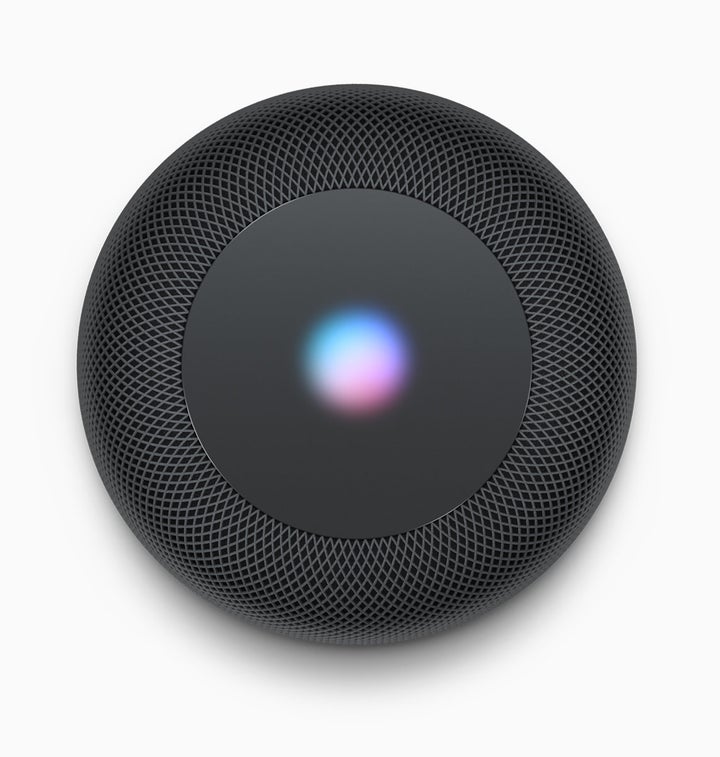
Apple’s HomePod is arguably the company’s biggest bet on music since the iPod or Apple Music. Controlled through Apple’s personal assistant Siri, HomePod is entering a crowded and increasingly competitive market of ‘smart speakers’ that aim to combine high-quality room-filling audio with voice controlled intelligence.
It’s difficult to do well – and only Google Home, Amazon’s new Echo and the Sonos One currently stand out as examples of getting this formula right, and even then some of them have had to make compromises.
To see if HomePod could potentially tick all the boxes, Apple invited me to spend an hour listening to its speaker – which has a UK price of £319 – ahead of its official UK launch on the 9 February.
First up, HomePod is a really good-looking piece of technology. The high-quality fabric coating, lack of any logo, and glossy glass top give it an understated but premium look. That’s combined with a smallish size of just 7-inches tall.

Now before we get to the sound it’s important to note that there is a big caveat here. HomePod currently only supports direct music streaming and music voice control through Apple Music. That means any spoken requests have to go through Apple’s own service. You can stream other services like Spotify to HomePod but it has to be over AirPlay and direct from another device.
As such all of the music I heard being streamed direct to the speaker through Apple Music. With that in mind they ask it to play Ariana Grande’s hit Side To Side. HomePod sounds really good.
The easiest way to describe it is that it’s like eating a spectacularly lavish club sandwich. Each layer is effortlessly defined, of extremely high-quality and clearly separate from the others. Ariana’s vocals seem almost detached from the speaker entirely, floating higher in the room while the bass ripples around the surfaces of the floor and walls. It’s actually quite remarkable how wide the soundscape is.

If we have a concern it is that this separation feels like it becomes even more acute at very high volumes. Listening to Ed Sheeran’s Shape of You at what could be described as a loud volume for a large room, it almost becomes too much, pushing the song to a place where the mid and upper ranges feel like separate recordings. It’s fascinating because so many speakers usually just become distorted at high volumes yet HomePod’s potential issue could be that it actually just starts to sound less human. Either way we’ll know for sure when we review it in full.
What we did like was how good it sounded regardless of where you put it. This is because HomePod can intelligently adjust its sound dependent on wherever it is in the room. It does this every time it’s moved and it just seamlessly happens in the background.
Finally, Apple brought us into a demo room to show us how it compared to its rivals, the Sonos One, Amazon Echo and Harman Kardon Allure. While the HomePod certainly impressed in this test it did feel a little unfair. It’s comfortably the most expensive speaker there so the fact that it sounded better shouldn’t really have been a surprise. For £319 you would really really hope that it sounded better than Amazon’s £90 Echo.

Mostly every action you take through HomePod will be achieved by speaking to Siri, we say mostly as there are three touch sensitive buttons on the top for changing volume and play/pause. Having fallen behind its rivals in recent years, Apple has actually been hard at work in upping Siri’s game and HomePod is the best example of how far they’ve come.
It now sounds more ‘human’ than rivals like Alexa and Google Assistant and can perform most of the tasks that you would expect a personal assistant to do. In the area of music Siri has also been given a bit of an upgrade. You can ask it to create customised playlists for you, tell you the history of an artist, even the story behind an album. While some of it is clearly ripped from the web, the way it does it is impressive.
There were of course a few hiccups throughout, the odd failure to recognise a command, but they felt like the usual pre-release bugs. We’ll have to wait for our review unit to find out for sure though.
Finally, everything we saw worked beautifully because it was all through Apple’s ecosystem. Reminders are set through the Reminders app, Notes through Apple’s Notes app. It does support some voice commands for other apps (like WhatsApp) but we will need to spend some more time properly finding out how closed off or open HomePod really is.
This, and the exclusivity with Apple Music, are important points to make as they represent clear limitations for those who aren’t wholly invested in Apple’s ecosystem. The whole point of HomePod is having a speaker that knows and understands your music tastes, and the only way it can do that is through Apple Music.
Should you rush out and buy one? If you’re not using Apple Music our initial thoughts are almost certainly no. If you are using Apple Music then our initial impressions were very good. Of course the real test will be whether it can replicate all those impressive features in the cruel, harsh environment of our living room.
